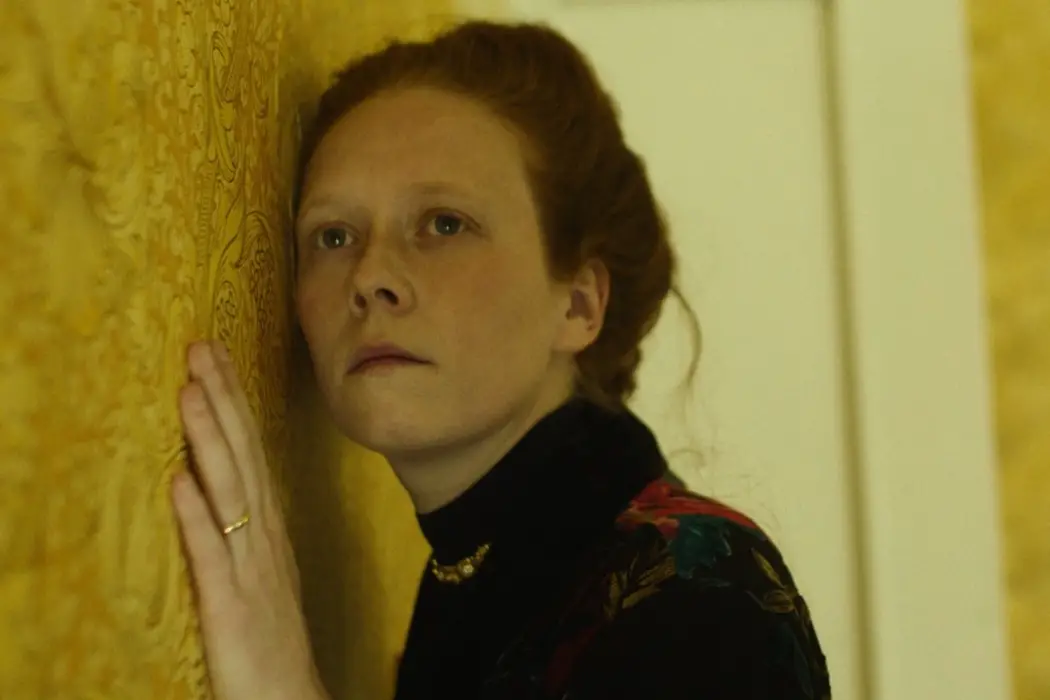As an artist paints personhood and life into a painting, viewers, too, observe the life of the subject. Though, how do concerns of consent to view these figures given personhood place shape Victorian visual culture? Victorian obsession with wanting the power to look and observe at what cannot look back at them reveals a disconnect between the control of the artist and the lack thereof of the woman in The Fair Dreamer Illman Brothers painting.
The woman’s lack of power in the ability to look at her viewers relates to her physical positioning on the tree as her pose is passive with her sleeping, yet potentially sexually suggestive, inviting a dangerous unwanted gaze in her direction. The arm’s resting across the forehead, her clinging to an emerging branch from above, and the dangling of her dainty feet suggest the absurdity and staging of the painting as she is hanging onto a tree’s form that does not seem to want to hold onto her. The open posture resting on a tree alluding to resting on a bed warrants her form to a scrutinizing gaze riddled with sexual desires. The painting’s layout of a posed woman in an untamed natural world gives agency to the male viewers’ gaze as the woman cannot advocate for her own desires but instead fulfills the needs of the people she was painted for—audiences viewing her framed canvas existence. Her powerlessness in an unconscious state becomes over-romanticized with the woman’s beauty and title, The Fair Dreamer, as her Victorian lace, silk dress, hat, perfect side profile, and fair skin embed themselves into her dreamy, awe inspiring aesthetic Victorian appeal and distract from the problematic dynamic of watching an unconscious woman.
At first glance, the summer’s day depicting a woman’s restful moment from her boat ride placed in the lower right-hand corner is overwhelmingly beautiful. The curve of the large trunk, the wispy leaves, long weeds, water, and mountains set the pastoral landscape, though the woman’s materialism with her extravagant way of dress contrasts her relationship to nature. Her passive and sexually suggestive body rests against the tree as if it has melted into its curves and yet, her fabric juxtaposes those natural curves, making her body unnatural. Her way of dress and access to a secluded spot transported by a boat suggests her high social standing with wealth and female mobility. She is the epitome of Victorian consumption with her fabrics unnaturally set against a dark trunk, taking up space on the print. Her displacement in a natural world as an unnatural, consuming and materialist being is exoticized. Exiting an era of Victorian art that was once “placid, sexless, emphatically un-mystical domesticity that dominated British art” and instead entering a “…mixture of mysticism and ‘fleshliness’ (i.e., sensuousness”), especially in connection with female subjects,” understanding women as sexual entities in fantasy worlds proliferated this exoticism (Victorian People and Ideas, Altick 1973, 290). Just as viewers overpower the woman’s experience, the aestheticism of this fantasy overpowers the reality of women’s changing roles with the New Woman movement. This print begs the absurd question, why resist the social ills of a patriarchy when you can daydream in fantasy land?
 Image credit: https://www.google.com/url?sa=i&url=https%3A%2F%2Fwww.ebay.com%2Fitm%2F205082576172&psig=AOvVaw2PII8eU6S7qjGt45W5nJ7w&ust=1744202402683000&source=images&cd=vfe&opi=89978449&ved=0CBQQjRxqFwoTCPDkk7m6yIwDFQAAAAAdAAAAABAJ
Image credit: https://www.google.com/url?sa=i&url=https%3A%2F%2Fwww.ebay.com%2Fitm%2F205082576172&psig=AOvVaw2PII8eU6S7qjGt45W5nJ7w&ust=1744202402683000&source=images&cd=vfe&opi=89978449&ved=0CBQQjRxqFwoTCPDkk7m6yIwDFQAAAAAdAAAAABAJ
Altick, Richard D. “The Nature of Art and Its Place in Society.” Victorian People and Ideas: A Companion for the Modern Reader of Victorian Literature, W.W. Norton, 1973.
